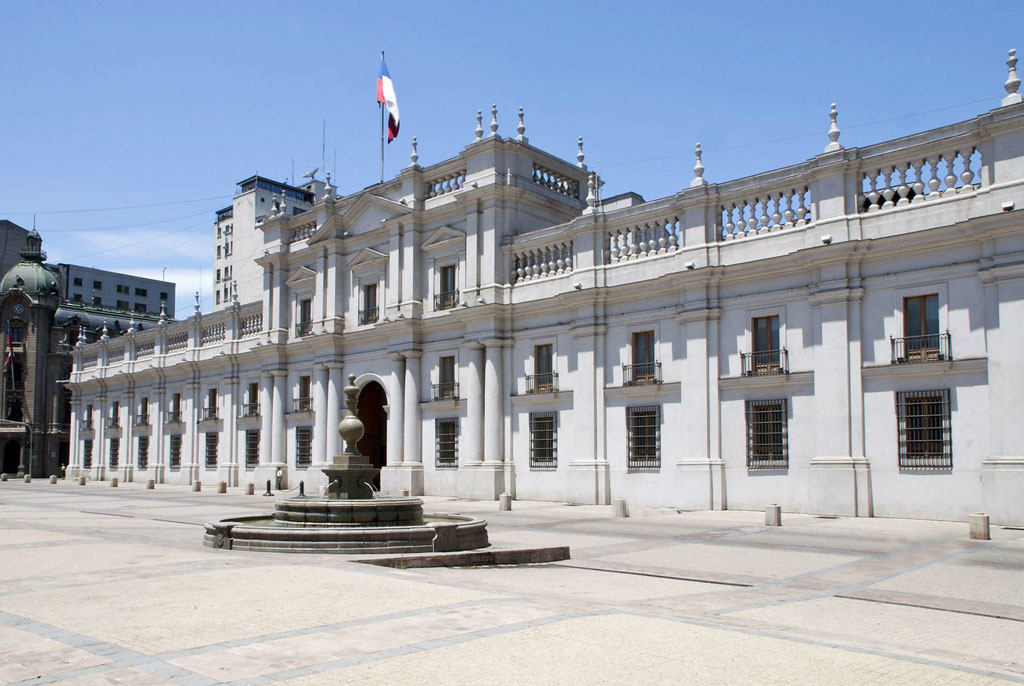Straddling the Alameda, several blocks southwest of the Plaza de Armas, the Barrio Cívico is the country’s political and administrative center. Facing the Plaza de la Constitución, the late-colonial Palacio de la Moneda is the locus of presidential authority. At 10am on even-numbered days, there’s a presidential changing-of-the-guard ceremony here.
In a development that rankles Pinochet diehards, a statue of former President Salvador Allende overlooks the plaza’s southeast corner, with a plaque inscribed with words from his last radio address: “I have faith in Chile and her destiny,” September 11, 1973.

Palacio de la Moneda. Photo © acanthurus/123rf.
Across the street, the Intendencia de Santiago (Moneda and Morandé), built 1914- 1916, features an attractive corner entrance and a spectacular interior cupola. French architect Emilio Jecquier designed the flatironstyle Bolsa de Comercio (Stock Exchange, La Bolsa 84), begun in 1914 but delayed when World War I disrupted the arrival of materials from New York. Immediately south, reached by a cobbled passageway but fronting on the Alameda, the Club de la Unión (1925) gave stockbrokers a place to schmooze on their lunch hours.
Never intended as the seat of government, the neoclassical Palacio de la Moneda (Morandé 130, tel. 02/26714103, [email protected], open to public 10am-6pm Mon.-Fri.) became the presidential palace in 1846, when Manuel Bulnes moved his residence and offices to the former colonial mint. It made global headlines in 1973, when the air force strafed and bombed it in General Pinochet’s coup against President Salvador Allende, who shot himself to death before he could be taken prisoner.
Pinochet’s regime restored the building to architect Joaquín Toesca’s original design by 1981, but it’s no longer the presidential residence. Ricardo Lagos, the first Socialist elected president since Allende, opened the main passageway for one-way public traffic from the Plaza de la Constitución entrance to the Plaza de la Libertad exit.
For a more thorough guided tour, contact the Dirección Administrativa del Palacio de la Moneda at its office beneath Plaza de la Constitución. Normally, arranging a visit takes a couple of days with a written or emailed request.
Between the palace and the Alameda, beneath the lawns and reflecting pools of the Plaza de la Ciudadanía, broad pedestrian ramps descend to a luminous subterranean facility, the Centro Cultural Palacio La Moneda. Its gigantic atrium flanked by special exhibit galleries and other facilities.
Excerpted from the Fourth Edition of Moon Patagonia.